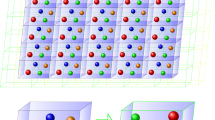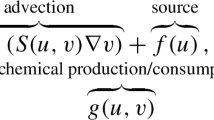Abstract
This paper describes transverse oscillations, within the range 0.2–30 Hz, of the surface of different animal cells: human and frog erythrocytes, human lymphocytes and monocytes, cultured 3T6 fibroblasts, and rat cardiomyocytes. The minimal area of the cell surface which undergoes unidirectional transverse movement is equal to or less than 0.5 × 0.5 μm. The amplitude of the oscillations recorded on larger surface areas is lower than on the smaller ones because of the averaging of solitary oscillations. The oscillation amplitude is different in different cells. The highest amplitude is recorded in human erythrocytes (350–400 nm), the lowest one, in fibroblasts, lymphocytes and monocytes (20–30 nm). The oscillations of the human erythrocyte are suppressed on hypotonic swelling, after hardening of the cell membrane owing to adsorption at the surface of the impermeable dye Heliogen Blue, by treatment of the cell with 0.01% glutaraldehyde, by treatment with 0.5 mM 4-hydroxymercurybenzoate, and after crenation caused by 1–2 mM 2,4-dinitrophenol. The amplitude of the surface oscillations is decreased in spectrin deficient erythrocytes obtained from patients with hereditary spherocytosis, which indicates an essential role for spectrin in the rapid oscillations of the erythrocyte surface.
Similar content being viewed by others
References
Agre P, Casella JF, Zinkham WH, McMillan C, Bennett V (1985) Partially deficiency of erythrocyte spectrin in hereditary spherocytosis. Nature 314:381–383
Alhanaty E, Sheetz MP (1981) Control of the erythrocyte membrane shape: recovery from the effect of crenating agents. J Cell Biol 91:884–888
Borisov AB, Khairutdinova YuA (1986) Regeneration and DNA synthesis in cultures of the rat cardiac ventricles after lesions of the cellular layer. Cytology 9:62–67
Bøyum A (1968) Isolation of leucocytes from human blood. Scand J Clin Lab Invest 21 [Suppl 97]:9–29
Brochard F, Lennon JF (1975) Frequency spectrum of the flicker phenomenon in erythrocytes. J Phys 36:1035–1047
Brudnaya MS, Kirpichnikova KM, Komissarchik YaYu, Levin SV (1984) Changes in the shape and ultrastructure of the white ghosts of erythrocytes upon their sealing and phthalocyanin dye sorption. Cytology 26:184–187
Chien S (1987) Red cell deformability and its relevance to blood flow. Ann Rev Physiol 49:177–192
Evans EA (1973) New membrane concept applied to the analysis of fluid shear and micropipette deformed red blood cells. Biophys J 13:941–954
Evans EA, La Celle PL (1975) Intrinsic material properties of the erythrocyte membrane indicated by mechanical analysis of deformation. Blood 45:29–43
Evans EA, Skalak R (1980) Mechanics and thermodynamics of biomembranes. CRC Press, Boca Raton, Fla
Fricke K, Sackmann E (1984) Variation of frequency spectrum of the erythrocyte flickering caused by aging, osmolarity, temperature and pathological changes. Biochim Biophys Acta 803:142–152
Fricke K, Wirthensohn R, Laxuber R, Sackmann (1986) Flicker spectroscopy of erythrocytes. Eur Biophys J 14:67–81
Iwasa K, Tasaki I, Gibbons RC (1980) Swelling of nerve fibers associated with action potentials. Science 210:338–339
Kachar B, Brownell WE, Altschuller R, Fex J (1986) Electrokinetic shape changes outer hair cells. Nature 322:365–368
Kirpichnikova KM, Levin SV, Shuvalova EV (1981) The spectrophotometric study of the surface of erythrocytes and of their ghosts using a phthalocyanine dye. Cytology 23:297–304
Knowles W, Marchesi SL, Marchesi VT (1983) Spectrin: structure, function and abnormalities. Semin Hematol 20:159–174
Korolev NV, Levin SV (1963) On microscopic examination of living biological test-objects by means of dark field lighting. Cytology 5:588–591
La Celle PL, Weed RI, Santillo PA (1976) Pathophysiologic significance of abnormalities of red cell shape. Membranes and disease. Raven Press, New York, pp 1–18
Levin SV, Golfand KA (1980) Reversible displacement of crab axon at the action potential. Cytology 22:717–721
Levin SV, Golfand KA (1984) A rapid transverse movement of the crab axon at action potential. Cytology 26:920–926
Levin SV, Malev VV (1987) The influence of elastic properties of the crab axon sheath on into movement during action potential. Cytology 29:569–576
Levin SV, Irlyna IS, Krol AYu (1984) The surface movement of the deciliated infusoria Paramecium caudatum. Cytology 26:1073 (in Russian)
Levin SV, Golfand KA, Malev VV (1986) The wave of local shortening and lengthening of crab axon during action potential. Cytology 28:1307–1315
Waugh RE (1987) Effect of inherited membrane abnormalities on the viscoelastic properties of erythrocyte membrane. Biophys J 51:363–369
Author information
Authors and Affiliations
Additional information
Offprint requests to: M. G. Grinfeldt
Rights and permissions
About this article
Cite this article
Krol, A.Y., Grinfeldt, M.G., Levin, S.V. et al. Local mechanical oscillations of the cell surface within the range 0.2–30 Hz. Eur Biophys J 19, 93–99 (1990). https://doi.org/10.1007/BF00185092
Received:
Accepted:
Issue Date:
DOI: https://doi.org/10.1007/BF00185092




